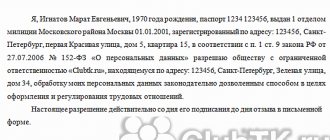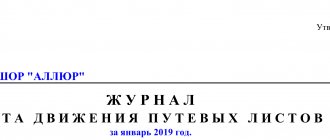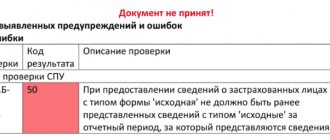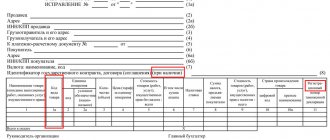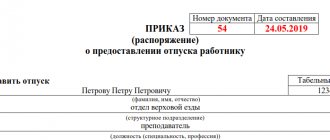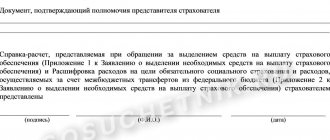Author: Ivan Ivanov
When an employee first starts work, a personal file is drawn up for him. It is a folder that contains all the papers that are in one way or another related to the employee and that are necessary for the company. This personal matter is duly recorded in the appropriate journal.
What rules to follow when creating a personal affairs journal?
There is no form for registering personal affairs in the legislation. A commercial company can develop its format from scratch or use existing industry forms, modifying them to suit its needs. In order to decide on its form in a particular organization, you need to think about whether the pages of the magazine will be filled out in book or landscape format. The choice largely depends on the amount of information and descriptions that are planned to be included in it.
It is necessary to prevent the potential for unauthorized removal of sheets from the journal. To do this, all its sheets are numbered and laced. A cord knot is tied on the last page and secured to the last sheet with a wax seal or a piece of paper pasted on with the company's seal. In addition, on the last page or on a sheet with a seal imprint pasted onto the lacing knot, the following inscription is made:
“In this magazine, the sheets are numbered, laced and sealed.”
Below is the date, position, signature and transcript of the signature of the head of the personnel service.
Entries in the personal records journal are made with a blue, purple or black ballpoint pen; erasures are not allowed. Personal files contain personal information and can be used by other departments of the company only with the permission of the head of the personnel service. Familiarization with the entries in the journal is also carried out with his permission in the obligatory presence of the person responsible for its maintenance.
The journal is kept by an employee who is responsible for making entries in it. After all its columns are filled in, the closing date is indicated on the cover and the magazine is transferred to the archive.
What is provided and why is it needed
The organization that maintains the personal files of employees, for the convenience of recording them, opens an appropriate journal.
This document is not provided for by any current regulatory act at the level of federal or even regional legislation, therefore the employer develops its form independently and approves it with his order or directive. The journal as such simplifies working with employees’ personal data, which is organized into subfolders:
- all information is systematized;
- finding it takes little time;
- convenient to use;
- an optimal level of protection of personal data from third parties is ensured;
- after all, it looks aesthetically pleasing.
As we have already said, this procedure for storing personal data is mainly used in the civil service, where it is mandatory. Therefore, the approach there is quite serious:
- documents for dismissed and current employees are stored separately from each other;
- As a rule, the storage of these documents is a separate room or isolated room;
- all papers and folders are placed in metal cabinets to prevent access by third parties;
- Only selected - specially appointed employees - have access to the premises or storage facility.
That's not all. To get acquainted with the contents of his file, and a civil servant is obliged to get acquainted with its contents at least once a year, a separate place is allocated; as a rule, it is located in a storage facility, but, depending on the footage and the capabilities of the organization, a separate room may be allocated.
This, as has already been said, for state companies and for all other organizations, the rules and storage procedure are established by the company’s management, but with one ironclad requirement prescribed by law - the personal data of employees must be protected, and no one is allowed to violate the confidentiality regime.
The journal of personal files of employees, a sample of which we have provided below, is used, as a rule, to record the fact that personal information from a particular case has been reviewed by a specific person and for a specific purpose. In general, for this purpose they use a familiarization card, which is actually stored, but the journal is more convenient to use for inspectors: you can immediately see how work is being done in this area of personnel records in the organization.
What should the cover of a personal journal look like?
The title page of the magazine is made of thick paper or cardboard. In this case, you can go one of 2 ways:
- order a ready-made magazine with a cover of the required format from the printing house;
- use a ready-made standard accounting book by gluing a printed cover onto the first sheet.
The title page must contain the following information:
- Name of the organization;
- the name of the journal, in the described case “Journal of personal affairs of employees”;
- journal serial number;
- start and end date of logging.
An indication of the person responsible for maintaining the journal can be made on its title page, on each page of the journal, or on its last page.
Who leads and where is it stored?
Since the personal files of employees in institutions are formed and maintained by personnel service employees or specially authorized employees (by order of the employer), the accounting journal in question is under the jurisdiction of these persons. They are responsible for the correctness and timeliness of its execution. During the maintenance period, it is kept by the responsible person.
Such a journal is an internal document. It cannot be transferred to employees of departments other than personnel departments without the order of the head of the personnel department. Employees can be introduced to it only in the presence of the person responsible for its maintenance. A log of employee affairs must be regularly provided to the head of the HR department to verify the correctness of decision-making, generate reports, and analyze activities.
Form and procedure for filling out the personal records log
On each page, starting from the 2nd sheet of the journal, you need to make a table that will contain the following columns:
- serial number of the record;
- personal file number;
- date of commencement of personal file management;
- FULL NAME. the employee against whom the case has been opened;
- employee personnel number;
- date of completion of the personal file;
- grounds for closing the case;
- date of archiving;
- field for comments or notes.
Below is an example of a logbook for registering personal files of employees for a commercial organization.
Personal file: what does it include?
A personal file is a folder in which various papers relating to an employee of an enterprise are filed. These documents can be either originals or copies. There is a list of documents that are filed in such a folder:
- an employee’s application to this organization for employment;
- the employment contract that was drawn up when this person joined this organization; in addition, all additional agreements that were concluded in addition to the employment contract itself;
The last paragraph indicates that the list is not exhaustive; if necessary, other papers not mentioned above can be added to it.
In addition, the personal file must contain an inventory that includes a list of all documents that are present in it.
For each of the papers included in the personal file, it must contain the following information:
- the name of the document itself;
- the day this paper was filed in the folder;
- the number of sheets contained in this document;
- if a document is seized, then in the place of the inventory where it is discussed, a mention of the fact of seizure is added, the reason for it and the person who did it are explained, and the date is also set.
An authorized employee certifies this inventory.
How to correct errors in the log
When making adjustments to journal entries, certain rules must be followed. If any record contains inaccurate, erroneous information and needs to be corrected, the responsible person needs to do the following:
1. If the journal form has a “Note” column:
- cross out the incorrect line with one line so that the incorrect entry can be clearly read underneath it;
- A correct entry is made in the same line of the form, and the note field includes the o, date, signature and transcript.
2. If there is no column with a note, then the correction is carried out by analogy with how they are made in the work book:
- the first next free line indicates “Record No. _ shall be considered invalid”;
- The correct entry is made below it.
Read also
08.01.2021
Familiarization with the personal dossier
A personal file is not given to the employee, unless there is an order from the head of the company. Every year, a specialist from the HR department, in the presence of the commission, provides the file to the employee for review. He does not have the right to make adjustments, add or remove documentation from the folder. If any inaccuracies are discovered, he is obliged to report this to the person responsible for personnel, attaching copies of supporting documents to the application.
Upon receipt of the dossier by order of the manager, the employee signs in the accounting journal.
State structures and private enterprises are obliged to treat accounting equally responsibly and, when forming a dossier base, comply with the requirements of regulations and GOSTs regarding the preparation of internal company documentation. When working with cases, a personnel specialist is obliged to comply with the requirements of the Labor Code of the Russian Federation in the field of protecting personal data of employees.
Helpful information:
What are the requirements for personnel logbooks and how the logbook should be designed in accordance with these requirements, see our video.
Dear colleagues, we have published an “empty” magazine - with empty column headings.
If you decide to keep a journal of accounting/registration of any documents or events that is difficult to find on sale, you can purchase our “blank” journal and fill out the “headings” of its column in your own way.
We provide examples of filling out the content of the journals below:
- Journal of registration of certificates issued to employees
- Journal of registration and accounting of documents issued to employees
- Job assignment log
- Register of acts
- Journal of registration of official notes (memos, explanatory notes, etc.)
- Journal of registration and accounting of personal cards
The magazine is “blank” - with blank headings, the graph is published in a convenient format (A4, book).
The cover is thick and durable (thick glossy cardboard 300 g + PVC).
High quality white paper 80 g. 72 pages
The lines are clear. In this case, the lines match. More than 2100 lines for entries. The width of the columns is convenient.
The title page of an “empty” magazine - with empty headings, the graph looks like this:
Thus, on the title page of an “empty” journal - with blank headings, the column is independently filled in with the name of the employer, and it is also written that it is registered/accounted for in the journal. Let's give examples.
Example 2
Column “Started: “___”_________20___.” filled in when opening the journal. Column “Completed: “___”_________20___.” filled in when the journal is closed.
On the second and third pages of the magazine there is a section “Employees responsible for maintaining the magazine.”
The remaining pages of the journal contain empty columns - 5 columns on each page. The first column is slightly narrower, the rest are the same width. In addition to the header line, each page has 30 lines to fill out.
If you want to keep a journal with few columns (1-5), then you can make entries on each page. If you plan to keep a journal with more columns (6-10), then you can keep it “spread”; the lines on the pages on the left and right are exactly opposite each other.
Examples of filling out the contents of an “empty” journal - with empty column headings
Example 1. Journal of registration of certificates issued to employees
Example 2. Job assignment log
Example 3. Journal of registration and accounting of documents issued to employees
Example 4. Journal of registration of acts
Example 5. Journal of registration of official notes (memos, explanatory notes, etc.)
Example 6. Journal of registration and accounting of personal affairs
Example 7. Journal of registration and accounting of personal cards
“Empty” journal - with empty headings, the column is numbered independently. In addition, the log is stitched, sealed and certified by the head of the organization (or other authorized person), if this is established by the employer at the local level (for example, by instructions for personnel records management). In this case, appropriate entries can be made about this on the last page of the journal.
There are no legally required forms approved, so institutions have the right to develop them independently in a free format. Moreover, they can use forms approved by different ministries.
Document storage requirements
The personal files of all employees who currently work at the enterprise must be kept in its personnel department, accordingly, the journal is kept there. A special fireproof cabinet is used to store them. The storage facility is kept locked and sealed.
The journal is available to the responsible employee of the HR department who maintains personal affairs and, in addition, to the head of the HR department. An authorized employee is appointed by the manager, who issues the corresponding order. Before starting work, he undergoes training. During this training, he is told about his responsibilities and the contents of the employee’s personal file, all the documents that need to be placed in it. Also, upon signature, he is introduced to the Regulations, which describe the processing of the employee’s personal data, and also contain the rules for their protection, as well as the rules for maintaining a log of the employee’s personal affairs.
If such a need arises during the performance of duties, access to the personal files of employees is also provided to the heads of the structural divisions in which they are employed. A managerial employee of this level may have the opportunity to familiarize himself with data from the personal file of a subordinate; for this he needs to contact the head of the personnel department or the head of the enterprise. Upon receipt of permission, an order of appropriate content is issued. This document serves as the basis for admission.
You should disclose only the information and provide only those documents that are required by the head of the unit and that are expressly included in his request.
It is not allowed to give him access to other documents and, especially, to the entire personal file. Also, before providing him with information, it is necessary to familiarize the head of the department with the Regulations on Personal Data of Employees, which is adopted in this company, and obtain his signature that he is familiar with this document.
The employee himself has free access to his own business. He doesn’t need anyone’s sanction to get to know him. He can receive it against signature any day he needs it. Then he can study it until the end of the working day, after which he needs to return the file to its storage location.
When an employee quits and moves to another company, it is possible to transfer the case to another company. This is carried out on the basis of a special request coming from her to the previous one, while such an obligation does not exist and the decision remains with the previous employer. When an employee retires, after some time his file is sent from the personnel department to the archive. The following periods are provided for its storage in the personnel service: three years in the general case and ten years if we are talking about civil servants.
Before sending the folder to the archive, it is stapled, assigned a number and a description is written.
The personal file compiled in this way is then sent to the archive, where it is kept for 75 years. Further, personal files are generally destroyed.
Special cases - folders with cases that relate to individuals who were leaders, received various knowledge and received state awards. Destruction is not allowed for their files; they are stored forever.
This video contains information about the personal affairs of employees.
The employee personal files log is an example of systematization of personnel appointment documentation. It is necessary to preserve the set of personal files of the organization’s employees and to implement the ability to quickly track information about the state of labor relations with a specific employee. The procedure for maintaining personal files by personnel services is mandatory for government agencies; other categories of legal entities are given the right to independently decide whether they need this type of personnel records or not.
Do I need to keep records?
The legislator has provided for the obligation to register a personal file for each employee exclusively for employers classified as state or municipal.
For employees employed in the civil service, regulations establish a list of documentation contained in the dossier, as well as the methods and conditions for its storage.
Due to the convenience of collecting information about employees by maintaining a personal file for each employee, such documents are also used in private sector enterprises (organizations).
The register of workers' affairs is included in the nomenclature of state structures without fail, since in these institutions the dossier is a mandatory element of office work.
Private companies have the right to create a file on their workers, and for the purpose of making it easier to find the necessary information and record basic information about their personal files, keep logs of their records.
The legislator also establishes the requirement that the person responsible for preparing and maintaining a personal file undertakes to familiarize the employee in respect of whom it is being maintained with the list of documentation and general information contained in the file.
The employee, having gone through the procedure of such familiarization, is required to sign.
If there is an accounting and registration book, the signature is affixed there, and if not, on a separate introductory sheet.
Due to the specifics of the information contained in the employee’s dossier (personal information that is not subject to transfer to third parties), the book of accounting and registration of personal affairs should also be kept in a place inaccessible to unauthorized persons.
How to register correctly?
A person appointed as such by order of the company’s management is responsible for preparing and maintaining files on the company’s employees.
A personal file is represented by a set of documents that should be stored in a separate folder or file. It is mandatory to design a cover with numbering in accordance with the nomenclature of the enterprise (organization), the name of the folder, as well as the name of the worker for whom the case is being opened.
An employee who is appointed by management order as responsible for entering statements into a personal file is also responsible for maintaining a log of their registration.
The legislator does not put forward any special requirements for the submitted accounting book. It can be compiled in any order, downloaded from the Internet or purchased from the office department.
The number of terms and columns also depends on the statements that are entered in the corresponding journal.
As a rule, the accounting journal contains the serial numbers of the dossier, statements against which of the employees the case was opened, the year of registration (upon the dismissal of the worker and the year of closure), the number of sheets of contents of the folder, information about the familiarization of the employee against whom the case is being conducted with signature and dates of review, as well as the signature of the employee responsible for maintaining the personal file.
Employers are given the opportunity to decide on maintaining a logbook and registering files on employees of an enterprise (organization) in electronic form.
In this case, the worker’s familiarization with the case statements is noted on a separate familiarization sheet.
In a handwritten book, information is entered by an authorized employee by hand, with a blue or black helium or ballpoint pen.
The statements entered in the registration journal must fully comply with the information contained on the cover of the personal file.
When entering information into the accounting book, no errors, blots or corrections are allowed.
When changes are made to the personal file, they must be displayed in the specified journal.
Download free sample
journal for accounting and recording employee affairs - word.
